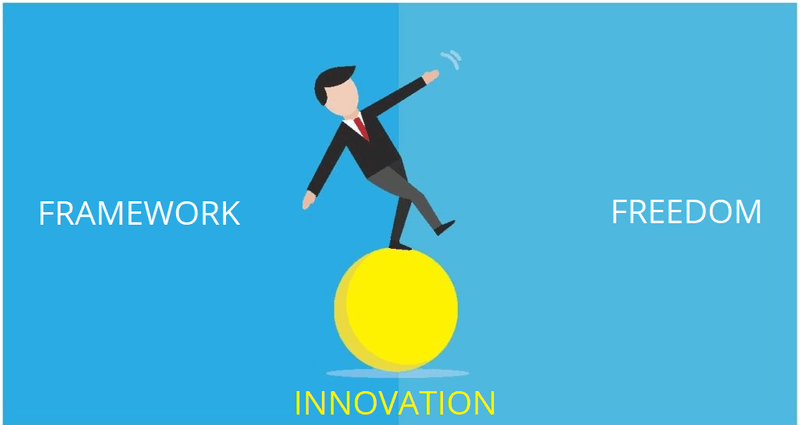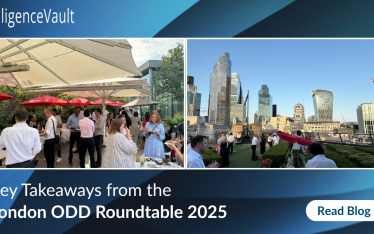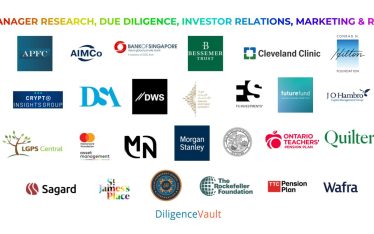Can you imagine a world without freedom, or a world without a framework? Along the same lines, a world with only freedom or with only framework? So both freedom and framework must co-exist. Freedom and framework are not a zero-sum game. Most people want to work at firms whose framework gives them a structure, but also gives them freedom to leverage their intellect and creativity. Yet, many firms struggle to strike a balance between the foundational need of framework and the critical nature of freedom.
Why Frame the Work?
Frameworks create clarity. Frameworks are built to encourage successful outcomes and deliver excellence. Here are a few areas where we see framework manifest well:
- Documenting a process to eliminate ambiguity
- Managing priorities to navigate the uncertain
- Managing expenses and budgets
- Balancing power and hierarchies to empower teams and individuals
Dependency on only framework, and especially a poor framework, stifles innovation. On the other hand, when formulated correctly, a good framework releases creative energies, and facilitates the freedom that drives innovation.
Why Freedom?
It’s simply too precious not to have. While a framework creates value for the seat and the role, freedom establishes the value of the person occupying the seat or performing a role. It’s needed to iterate and deviate from the norm. It’s needed to support collaboration across disciplines, allowing a free flow of distinct viewpoints, which we know to be a source of new ideas and drive innovation. In our world of investment management, strategic asset allocation establishes basic framework, and tactical positioning provides the freedom to anticipate market changes and create outperformance possibilities.
Over the past five years, we have works with diverse firms of all shapes and sizes, and today, we categorize them in a quadrant (below):
- The top right quadrant are the leaders in their space. They have achieved a true balance between freedom and framework
- The middle of the pack includes the majority. It comprises entrepreneurial firms with extraordinary focus on freedom or traditional firms with obsession with framework. They would have the ability to transform themselves in to leaders with a balanced approach
- The firms that have fallen behind significantly are the ones with no conviction in either freedom or focus
Balancing Paradigm
Here at DiligenceVault, we have large, complex investment management firms as clients, and we also have entrepreneurial firms as clients. Where we see success is on the right quadrants. The top right quadrant was an unexpected place to find innovation, but in hindsight it does make sense. These firms in the top right quadrant have established a fundamental framework that is friction-less and have empowered people to exercise freedom within such framework.
Today, firms are competing in new environments of innovation, technology, and globalization, with new opportunity sets, and new challenges. Future strategy includes an integral bet on technology to enable the best positioned firms to claim an outsized share of future value ecosystem. But the historical frameworks of adopting technology fail here. While technology adoption used to be an expense and driven by budget, it’s now an investment in the future. The framework for viewing technology needs to change, and the freedom of approach is what will distinguish future winners.
The critical path to executing on this new balance requires a tranched approach of risk distribution. First order is the framework, that can be systematized, and is similar to foundational senior low risk investment. Next, is the second order and integration of freedom, with equity like functionality. Risk tranching the experiences is a practical approach to integrating the two – Freedom and Framework, enabling the firms to transition to the top right quadrant.
Framework, Freedom and The Future
To guarantee success, firms must focus on what they do best – offering innovative products and services – but also differentiating from competition, delighting customers, and retaining the new generation of talent. Take for example, this new generation of talent, Generation Z, who wants freedom from the 9-5 framework. A framework which has been established as a norm of corporate life. This is changing the way of work. A new approach is necessary for firms to capitalize on opportunities and manage challenges presented by these new dynamics of talent, technology and transition. In a world where the balance of freedom within a successful framework is not only desired but required, we hope that you will continue this type of innovative framework, dare I say the world, depends on it. Because it just might.



